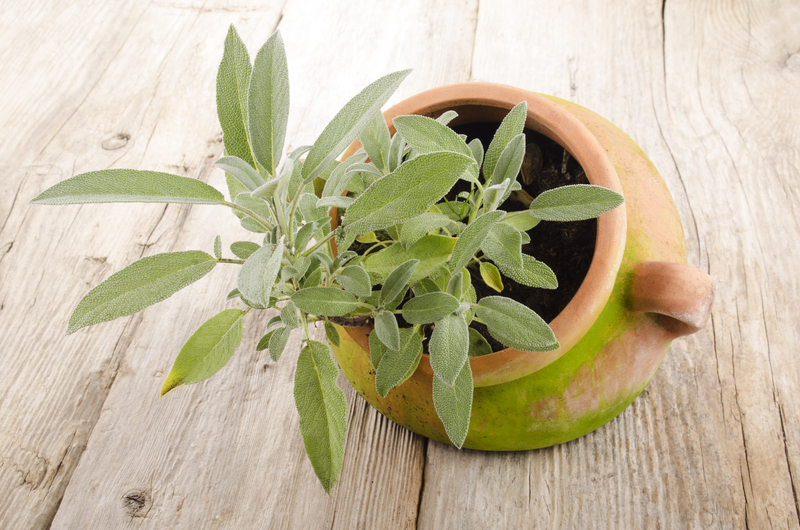Simple Steps to a Bountiful Herb Garden
Posted on 30/09/2025
Simple Steps to a Bountiful Herb Garden
Growing your own herbs is more than just a hobby--it's a journey towards fresher flavors, fragrant greenery, and a more sustainable lifestyle. Whether you're looking to spice up your cooking, enhance your garden's beauty, or enjoy the health benefits of homegrown plants, a thriving herb garden is within reach. Follow these simple steps to create a bountiful herb garden that will provide you with an abundant harvest all year long.
Why Start a Home Herb Garden?
Having easy access to fresh herbs offers a range of benefits. Here's why cultivating your own herb garden is a smart and enjoyable choice:
- Freshness: Pick herbs just when you need them for unbeatable flavor and aroma.
- Cost-Effective: Save money by growing herbs you use regularly.
- Health Benefits: Herbs like basil, mint, and thyme offer natural antioxidants and nutrients.
- Aesthetic Appeal: Herbs add texture, color, and fragrance to gardens and indoor spaces.
- Eco-Friendly: Reduce food miles and packaging waste by harvesting at home.

Step 1: Plan Your Herb Garden Carefully
Choose the Right Location
Most herbs thrive with at least six hours of sunlight per day. Assess your available space--whether it's a sunny windowsill, backyard plot, or balcony container. Adequate airflow is also crucial to prevent diseases.
Top tips for location selection:
- South-facing spots usually receive the most sun.
- Keep herbs close to the kitchen for easy access during cooking.
- Ensure good drainage if planting outdoors; avoid low spots where water collects.
Decide Between Indoor and Outdoor Herb Gardens
Both indoor and outdoor herb gardens can be successful with proper care. Indoor herb gardens are perfect for apartment dwellers or climates with harsh winters, while outdoor gardens may yield larger harvests.
Step 2: Select Your Favorite Herb Varieties
Choosing the right herbs to grow is essential for a successful, abundant herb garden. Start with easy-to-grow, high-yield herbs that match your culinary preferences and growing conditions.
Popular Herbs for Beginners
- Basil: Great for Italian dishes and loves lots of sun.
- Mint: Hardy and spreads easily--perfect for teas and desserts.
- Chives: Mild onion flavor; ideal for salads and garnishes.
- Parsley: Biennial herb with versatile culinary uses.
- Rosemary: Aromatic and drought-tolerant once established.
- Thyme: Compact, low-growing, and flavorful.
Consider Your Climate and Soil
Some herbs prefer Mediterranean-type conditions (like rosemary and lavender), while others, such as parsley and cilantro, thrive in slightly cooler, moist environments. Check the recommended hardiness zones for each herb before planting.
Step 3: Prepare the Soil for Success
The foundation of a thriving herb garden is healthy, well-draining soil.
Improve Soil Quality
- Mix organic compost or well-rotted manure into your garden soil.
- Perform a soil test to check pH; most herbs prefer neutral to slightly alkaline (pH 6.5-7.5).
- Avoid heavy clay soils and areas prone to standing water.
Choose the Right Potting Mix for Containers
If growing herbs in pots, use a high-quality, light potting mix designed for herbs or vegetables. Add some grit or perlite to increase drainage.
Step 4: Planting Your Herbs
Decide: Seeds or Starter Plants?
Herbs like basil, cilantro, dill, and parsley grow quickly from seed and can be direct-sown. Other herbs--including rosemary and lavender--are easier to start from young plants (transplants), as they take longer to sprout.
- Starting from Seed: Follow packet instructions for depth and spacing. Mist lightly until sprouted.
- Transplants: Dig a hole just deep enough to cover the plant's root ball. Water thoroughly after planting.
Companion Planting for a Healthy Herb Garden
- Basil and tomatoes benefit each other when grown together.
- Mint and oregano can be invasive; keep them in containers or separate raised beds.
- Chives, dill, and parsley attract pollinators and beneficial insects.
Step 5: Provide Optimal Care Throughout the Growing Season
Watering Your Herbs
Consistent, but not excessive, watering is key. Most herbs prefer soil that's moist but never soggy.
- Water in the morning to reduce fungal diseases.
- Let the soil dry slightly between waterings, especially for Mediterranean herbs.
- Mulch around outdoor herbs to help retain moisture and suppress weeds.
Fertilizing for Abundant Growth
Herbs don't usually require heavy fertilization. Over-fertilizing can compromise their flavor. A light application of all-purpose organic fertilizer every few months is sufficient.
Pruning and Pinching for Bushier Herbs
Regularly pinching back herb tips encourages branching and bushier plants. Snip off flower buds before they bloom to direct energy back into leaf production, especially for basil and mint.
Step 6: Preventing and Managing Pests and Diseases
A healthy, vigorous herb garden is generally resistant to pests and common diseases. However, keep an eye out for the following:
- Aphids: Spray with a gentle blast of water or use insecticidal soap.
- Powdery Mildew: Provide good air flow and avoid overhead watering.
- Slugs and Snails: Hand-pick or set barriers around vulnerable seedlings.
- Root Rot: Ensure proper drainage, especially for potted herbs.
Pro Tip: Rotate crops and use clean pots to avoid soil-borne diseases.
Step 7: Harvesting Your Herbs for Maximum Flavor
Harvesting herbs the right way not only boosts their flavor, but also encourages new, healthy growth.
When and How to Harvest Herbs
- For best flavor, pick herbs in the morning after dew has dried but before the sun gets too hot.
- Use sharp scissors or pruning shears to avoid bruising the stems.
- Never remove more than one-third of the plant's growth at once.
- Pinnable herbs, like basil and parsley, appreciate frequent pinching to encourage fullness.
For perennial herbs (such as rosemary, thyme, oregano), small clippings can be taken throughout the growing season, but perform heavier harvesting just after flowering.
Bonus Tips for an Exceptional Bountiful Herb Garden
Design Ideas for Herb Gardens
- Group herbs with similar needs together for easier care.
- Create a kitchen windowsill herb garden for convenience.
- Plant in spiral or tiered raised beds for visual interest and optimal space.
- Use hanging baskets or vertical planters if space is limited.
Preserving Your Harvest
Extend your herb enjoyment year-round by drying, freezing, or infusing herbs in oils and vinegars!
- Drying: Tie sprigs and hang upside down in a dark, ventilated area.
- Freezing: Chop and store in ice cube trays with water or olive oil.
- Infusing: Steep fresh herbs in oil or vinegar for custom flavors.

Common Mistakes to Avoid When Growing Herbs
- Overwatering or poor drainage: Most herbs hate soggy roots.
- Planting aggressive herbs together: Mint and oregano can overtake other plants.
- Too little sunlight: Lack of direct sun leads to leggy, flavorless growth.
- Ignoring routine pruning: Unpruned herbs become woody and less productive.
Final Thoughts: Cultivate Your Dream Herb Garden Today
With these simple steps to a bountiful herb garden, anyone can grow a flourishing patch of aromatic, delicious herbs--no green thumb necessary! Remember, start small, learn as you go, and enjoy the journey from planting to harvest. A little effort yields months of pleasure, beauty, and flavor for your home and kitchen.
Ready to start growing?
Whether you sow seeds in pots or plant an expansive outdoor bed, let these herb garden basics guide you towards gardening success. Happy harvesting!

